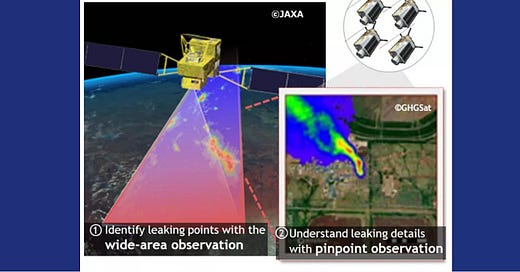GHGSat Anticipates Two Satellite Launches This Summer
Part of the Company's Rapid Constellation Growth Plans
GHGSat plans to launch two new satellites in summer 2025. This launch is part of rapid planned growth for its pioneering satellite constellation, which detects the source and rate of methane emissions at the facility level.
“These two new satellites will allow us to revisit sites even more frequently, keeping us years ahead of the field."
Stephane Germain, GHGSat
The new satellites will further bolster GHGSat’s ability to monitor industrial sites at the most frequent cadence in the field, meeting the growing global demand for regular, reliable emissions monitoring of critical industrial assets.
In 2016, GHGSat launched the world’s first satellite capable of directly attributing methane emissions to individual industrial facilities. Since then, the company has steadily expanded its proprietary constellation, which currently includes 12 commercial satellites in orbit, which track emissions from tens of thousands of sites per day—a number far exceeding the capacity of any emerging competitor.
“These two new satellites will allow us to revisit sites even more frequently, keeping us years ahead of the field and helping our customers to ensure that methane emissions don’t become a financial or regulatory liability by detecting methane leaks, fast,” said Stephane Germain, CEO of GHGSat.
Each satellite in GHGSat’s constellation is equipped with patented sensors capable of detecting methane emissions as low as 100 kilograms per hour, with a spatial resolution of 25 meters (≈82 feet), unmatched by any government or commercial satellite system today. This ultra-fine resolution allows GHGSat to monitor emissions sources with pinpoint accuracy at a frequency that no other space-based system can replicate, determining the source of an emission often down to a single facility. In the near-decade since the launch of its first satellite, GHGSat has built the most robust collection of facility-level emissions data in the world.
GHGSat has a strong history of collaborative partnerships with global energy and government leaders, offering independent data to verify emissions and support regulatory compliance. GHGSat also supports global multilateral partnerships that seek to reduce emissions, safeguarding the natural beauty of Earth for generations to come.
As industries and governments worldwide seek to secure resilient energy systems, the need for accurate, transparent, and independent emissions data has never been greater. GHGSat’s expanding fleet continues to set the standard in satellite emissions monitoring, enabling faster response times and greater coverage than any other player in the market.





